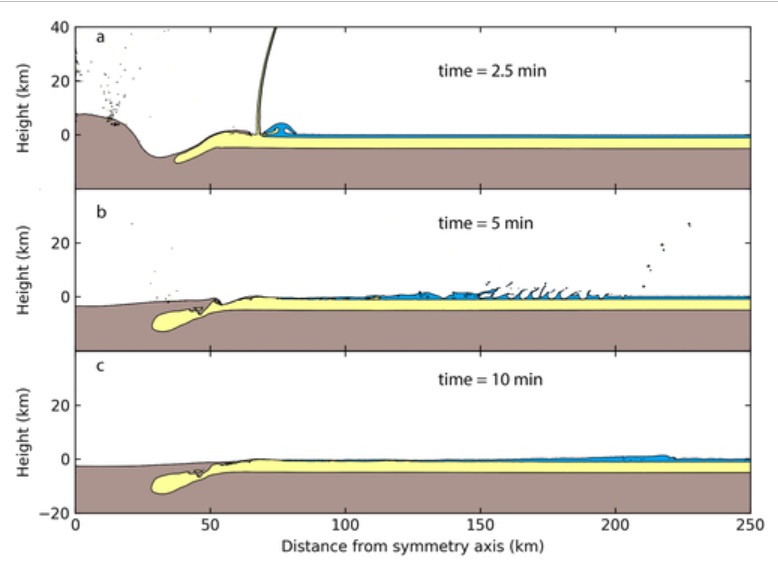The enigmatic author Chan Thomas began his pole shift book (The Adam and Eve Story) with a description of a two mile high tsunami from the Pacific Ocean crashing into California and washing over all of North America before emptying into the Atlantic. Some pole shift researchers doubt such high waves are even possible. Interestingly, a recent analysis of the sediments disturbed by the asteroid impact that killed off most of the dinosaurs over 65 million years ago suggests that catastrophe triggered an even larger tsunami:
In “The Chicxulub Impact Produced a Powerful Global Tsunami” the authors conclude that: “The impact tsunami was up to 30,000 times more energetic than the 26 December 2004 Indian Ocean tsunami, one of the largest tsunamis in the modern record…. and therefore likely scoured the seafloor and disturbed sediments over 10,000 km from the impact origin…. About 2.5 min after contact of the projectile, a curtain of ejecta pushing water outward from the impact produced a 4.5-km-high wave…. At 10 min, after all the ejecta had fallen, a 1.5-km-high wave, known as a rim wave, located 220 km from the point of impact was left propagating throughout the deep ocean.”
A 4.5 kilometer high wave (2.8 miles high) is even worse than what Chan Thomas proposed. Though the wave height was reduced to just 1.5 km (0.9 miles) after ten minutes, this is still a devastating wall of water almost 5,000 feet high.

A pole shift would induce less of a standing wave height in the open oceans, but with the momentum of the entire ocean behind it, the tsunami from a pole shift is likely to come farther inland, and higher onto land, than an impact-generated tsunami like the Chixulub event. So while a pole shift tsunami would almost definitely not have even a two mile high ocean wave, it is possible that such a tsunami could submerge mountains deep within continents which stand taller than the maximum height of the ocean wave. (See Ben Davidson’s explanation in my previous post.)
A mile high city like Denver could still be washed away by the tsunami generated during a sufficiently fast pole shift, for example if our planet’s crust rotated thirty degrees in a matter of hours.

